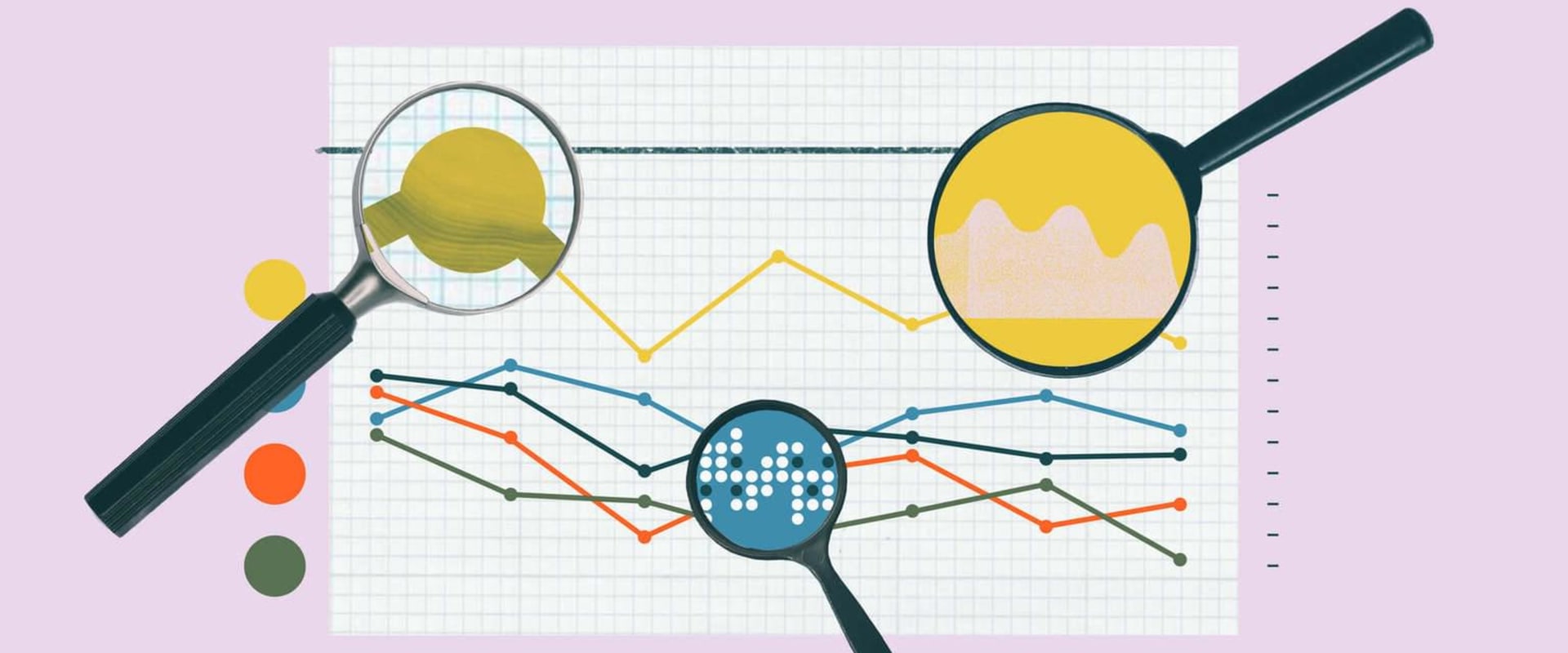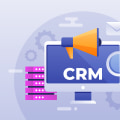In today's fast-paced and constantly evolving business landscape, data analysis and reporting have become crucial elements for success. With the rise of technology and the increasing amount of data being generated, it has become essential for companies to have an effective CRM strategy in place. A CRM (Customer Relationship Management) system allows businesses to gather, organize, and analyze customer data, providing valuable insights for decision-making. In this article, we will explore the benefits of using a CRM, specifically in terms of data analysis and reporting.
Whether you are a small startup or a large corporation, understanding how to utilize your CRM data can greatly impact your business's success. So, let's dive in and discover how you can improve your CRM strategy through data analysis and reporting. In today's fast-paced business world, customer relationship management (CRM) is crucial for success. However, simply having a CRM system in place is not enough. To truly optimize your CRM strategy, you need to utilize data analysis and reporting. Data analysis involves examining large sets of data to uncover patterns, trends, and insights that can inform decision-making.
Reporting, on the other hand, involves presenting this data in a clear and organized manner, often through visualizations or dashboards. When it comes to CRM, data analysis and reporting can play a significant role in improving customer relationships and overall business success. By understanding your customers' behaviors, preferences, and needs, you can tailor your interactions and strategies to better meet their expectations. So how can you effectively use data analysis and reporting in your CRM strategy? Let's explore some best practices.
Best Practices for Using Data Analysis and Reporting
1.Start with clear objectives: Before diving into data analysis and reporting, it's essential to have a clear understanding of what you want to achieve. What questions do you want to answer? What insights do you hope to gain? Having a defined goal will help guide your approach and ensure that you are analyzing and reporting on the right data.2.Choose the right tools: There are various data analysis and reporting tools available, so it's crucial to choose the ones that best fit your needs. Some popular options for CRM include Salesforce Analytics, Microsoft Power BI, and Tableau.Consider factors such as ease of use, integration capabilities, and cost when selecting your tools.3.Clean and organize your data: The quality of your data will significantly impact the accuracy and effectiveness of your analysis and reporting. Before diving in, make sure your data is clean, accurate, and organized. This may involve data cleansing and data integration processes.4.Continuously monitor and update: Data analysis and reporting are not a one-time task. To ensure you are making the most informed decisions, it's essential to continuously monitor and update your data.
This will help you stay on top of changes in customer behavior and make adjustments to your strategies as needed.
Types of Data Analysis and Reporting for CRM
Now that we've covered some best practices let's explore the different types of data analysis and reporting available for CRM.1.Descriptive analysis: This type of analysis involves summarizing and describing the characteristics of your data, such as customer demographics, purchasing patterns, and interactions with your company.2.Predictive analysis: Predictive analysis uses statistical techniques and algorithms to make predictions about future customer behaviors and outcomes. This can help you anticipate customer needs and personalize your interactions with them.3.Diagnostic analysis: Diagnostic analysis involves delving deeper into your data to understand why certain patterns or trends exist. This can help you identify areas for improvement in your CRM strategy.4.Prescriptive analysis: Prescriptive analysis takes things a step further by not only identifying problems but also providing suggestions for how to solve them. This can be particularly helpful for improving customer satisfaction and retention.Tips for Successful Implementation and Training
Implementing data analysis and reporting into your CRM strategy may require some adjustments and training for your team.Here are a few tips to ensure a smooth transition:1.Communicate the benefits: Make sure your team understands the value of data analysis and reporting in improving customer relationships and overall business success.2.Provide adequate training: Offer training sessions or resources to help your team learn how to use the tools and interpret the data effectively.3.Encourage collaboration: Data analysis and reporting can provide valuable insights, but it's essential to discuss and collaborate with your team to fully understand and act on these insights.
Integrating CRM with Other Business Processes
To truly maximize the benefits of data analysis and reporting, it's crucial to integrate your CRM with other business processes. This can help create a seamless flow of information and improve overall efficiency. For example, you can integrate your CRM with your sales and marketing processes to better target and engage with customers. You can also integrate it with your customer service processes to improve response times and personalize interactions.The Benefits of Using Data Analysis and Reporting for CRM
So why should you invest in data analysis and reporting for your CRM strategy? Let's take a look at some key benefits:1.Improved customer relationships: By understanding your customers better, you can tailor your interactions and strategies to meet their specific needs and preferences.2.Informed decision-making: Data analysis and reporting provide valuable insights that can inform decision-making across all areas of your business.3.Increased efficiency: By integrating CRM with other business processes, you can streamline workflows and improve overall efficiency.Real-Life Examples of Success
Still not convinced? Here are some real-life examples of companies who have seen success by implementing data analysis and reporting in their CRM strategies:1.Netflix: By using data analysis and reporting to understand customer viewing habits, Netflix has been able to create personalized recommendations, leading to increased customer satisfaction and retention.2.Amazon: Amazon uses data analysis and reporting to track customer behavior and preferences, allowing them to make targeted product recommendations and improve the overall customer experience.3.Starbucks: Starbucks uses data analysis and reporting to analyze customer purchase data and personalize marketing campaigns, resulting in increased customer loyalty and sales.Take Your CRM Strategy to the Next Level
Data analysis and reporting can be a game-changer for your CRM strategy. By following best practices, utilizing the right tools, and integrating with other business processes, you can gain valuable insights into your customers and make informed decisions that will drive success for your business.What is Data Analysis and Reporting?
Data analysis is the process of examining large sets of data to uncover patterns, trends, and insights.Reporting refers to the presentation of this data in a visual or written format. Together, these tools allow businesses to make data-driven decisions.
Best Practices for Using Data Analysis and Reporting
To get the most out of data analysis and reporting for your CRM strategy, it's important to follow some best practices. These include setting clear goals, using a variety of data sources, and regularly reviewing and analyzing your data.Tips for Successful Implementation and Integration
Implementing data analysis and reporting for CRM can be a complex process. It's important to have a plan in place and involve all relevant stakeholders.Additionally, integrating your CRM with other business processes, such as marketing and sales, can further enhance its effectiveness.
Real-Life Examples of Success
Many companies have seen significant improvements in their CRM strategy by incorporating data analysis and reporting. For example, Coca-Cola used predictive analytics to forecast customer behavior and tailor their marketing efforts accordingly, resulting in a 30% increase in sales.Types of Data Analysis and Reporting for CRM
There are several types of data analysis and reporting that can benefit your CRM strategy. These include descriptive, predictive, and prescriptive analytics. Descriptive analytics provides a summary of past data, while predictive analytics uses algorithms to forecast future outcomes. Prescriptive analytics goes a step further by providing recommendations for action based on the data. Data analysis and reporting is an essential tool for optimizing your CRM strategy.By utilizing these practices, you can gain valuable insights into your customers and make informed decisions that will ultimately improve your relationships with them. Remember to set clear goals, use a variety of data sources, and regularly review and analyze your data for the best results. By following these best practices and learning from real-life examples of success, you can take your CRM strategy to the next level.



